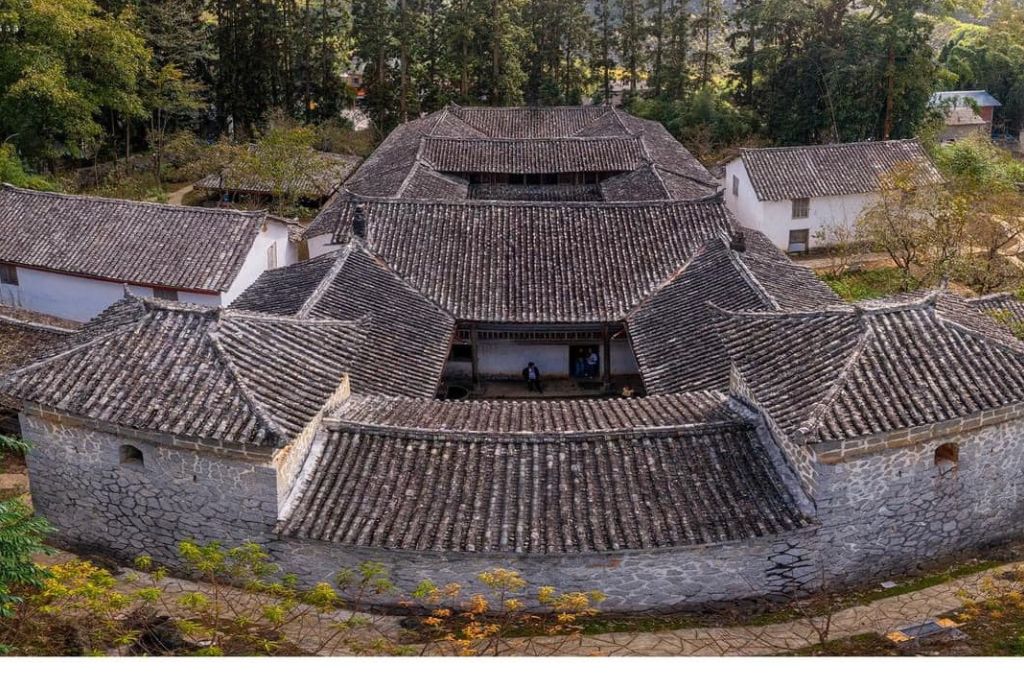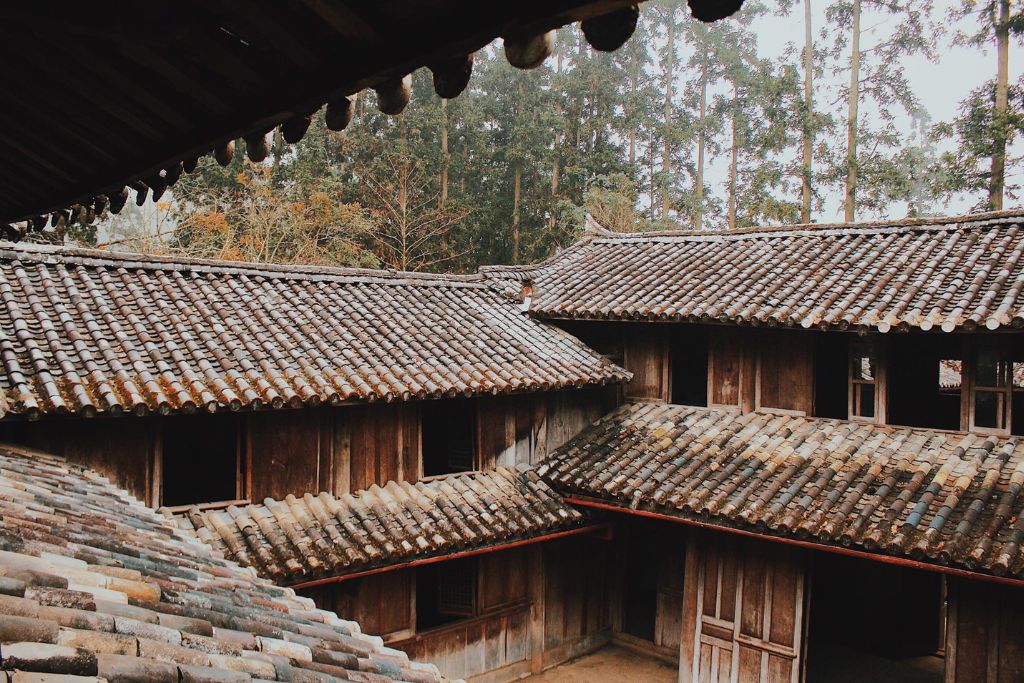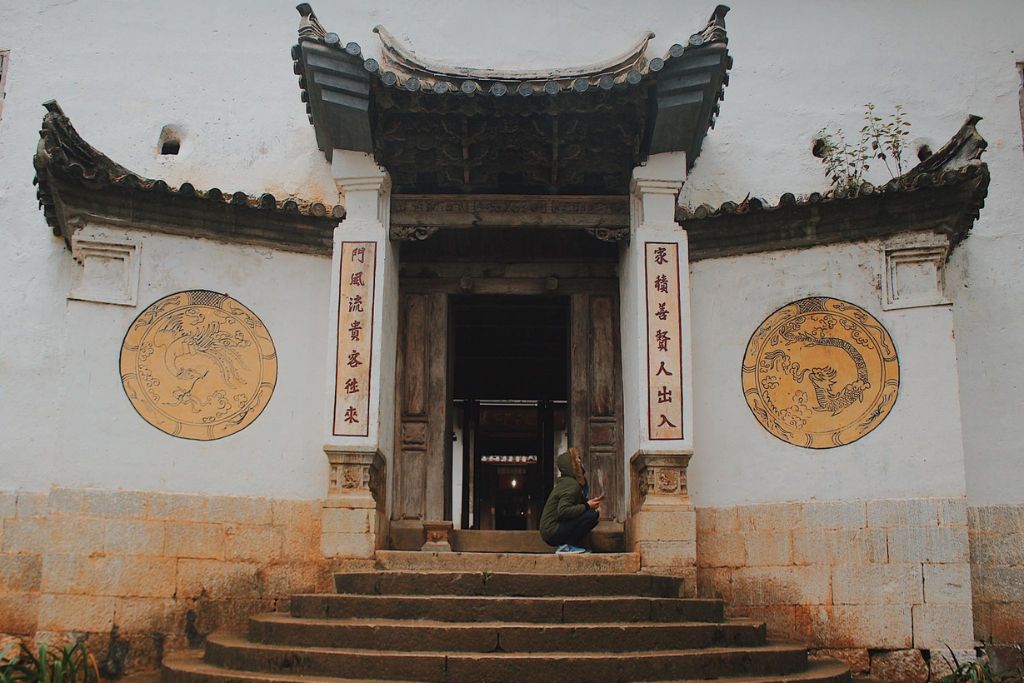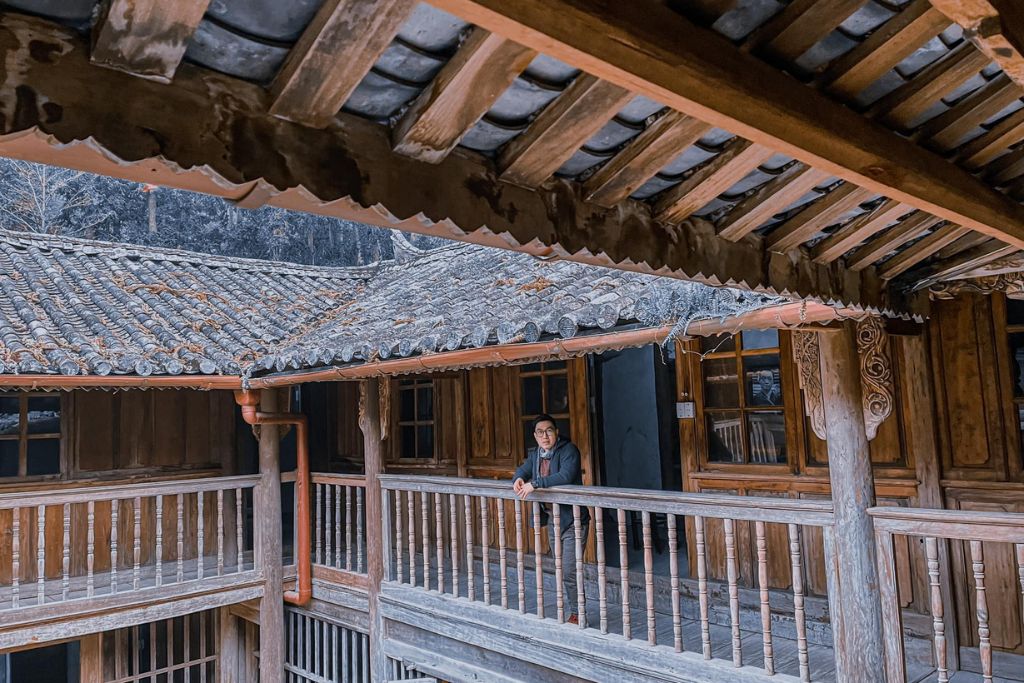Vuong Palace (also known as the Vuong Family Palace) is a grand construction dating back to the late 19th century, featuring a unique architectural blend of various cultures and surrounded by mysterious stories. Let’s explore what makes Vuong Palace an impressive tourist destination.
1/ Introduction to Vuong Palace
1.1 Overview of Vuong Palace
Vuong Palace is located in the Sa Phin Valley, Lung Phin Commune, Dong Van District, Ha Giang Province, approximately 125km from the city center and only 15km from the famous Dong Van Karst Plateau. This ancient house is closely tied to the lives and careers of two Hmong figures, King Cat Vuong Chinh Duc and Vuong Chi Sinh (or Vuong Chi Thanh). Vuong Chinh Duc (1886 – 1962) led the feudal regime in the mountainous region of the Hmong people, earning him the powerful title of King Cat. His son, Vuong Chi Sinh, followed the revolutionary path and, due to his contributions to the country, was elected as a delegate to the National Assembly for the first two terms.

1.2 History of Vuong Palace Construction
Construction began in 1898 and was officially completed in 1907, costing a considerable amount of 150,000 silver Dong Duong, equivalent to 150 billion VND today. The palace was designed and built by craftsmen from Yunnan, China, in collaboration with the Hmong people, creating a structure spanning over 1200m2 on an area of about 3000m2. Due to its long history and undeniable cultural value, Vuong Palace was recognized as a national monument by the Ministry of Culture, Sports, and Tourism in 1993, after nearly a century of existence. Moreover, it took five years to start construction, and everything was built using manual labor without the use of any machinery.
2/ Discovering the Unique Architecture of Vuong Palace
2.1 Design Features of Vuong Palace
Vuong Palace is nestled at the foot of a valley surrounded above by elevated terrain. With this topography, the entire structure is protected by mountain arches known as “turtle-shell-shaped gates,” providing excellent defense during times of intense warfare. After over a century of existence, everything in the palace remains intact, creating a fascinating experience for visitors who come here at least once in their lifetime.

The interior architecture of the palace is exceptionally unique, representing a fusion of three different cultures: Hmong, French, and Chinese. The structure consists of four horizontal houses, six vertical houses divided into three areas—front palace (for guards and servants), middle palace, and rear palace (residential and working areas)—with 64 small rooms arranged on two floors. To meet the criteria of durability, craftsmen used green stone to build the palace, ensuring its resilience against enemies and time. The walls and columns are made of wood, adding dignity and elegance to the rooms. Another material used is fired clay for the tiled roofs, making them more aesthetically pleasing without compromising strength. To this day, Vuong Palace remains one of the few structures that meet all the requirements for residence, work, and defense whenever there is conflict.
Although the architecture combines three different cultures, many people note that the Vuong Palace is extremely harmonious and gracefully unified without any sense of constraint or discord. Additionally, despite being built on a 3000m2 plot of land, the palace is not as large or imposing as some might imagine because it is composed of small clusters, embodying the simple and rustic characteristics of folk architecture. The design principle of low in the middle and high on the outside makes the overall palace blend more closely with the surrounding landscape.
2.2 Interior and Objects in Vuong Palace
In general, most of the furniture and objects associated with King Cat are well-preserved to this day. Only some chairs and wooden items were initially made of pine, later replaced by ironwood and teak to resist decay over time. Wooden components bear the local cultural identity, with intricate carvings of native flowers such as peach blossoms and apricots. The house pillars are crafted to resemble opium poppy fruits, a plant that King Cat traded to fund the construction of the palace. Some Western-influenced items in this structure include a bathtub made of marble, glass windows next to the fireplace, and entrances made of granite connected by a sturdy wrought-iron frame with a French architectural touch.

3/ Legends Surrounding Vuong Palace
Alongside its unique architecture, Vuong Palace is surrounded by stories that have been passed down from its construction until today. Legend has it that initially, King Cat Vuong Chinh Duc resided in a high-mountain foot at the edge of a large mountain pass. Upon the suggestion of a subordinate that the residence was not suitable according to feng shui principles, the Vuong family sought advice from an expert in astronomy and geography to quickly find a location that was both strategically advantageous and had good feng shui. They sent troops to China to invite Truong Chieu, a renowned fortune teller, to find the ideal location for building the palace. After careful consideration, the master chose Sa Phin as the new residence for King Cat. Truong Chieu confidently asserted that the surrounding Sa Phin valley resembled a turtle-shaped hill, and constructing the palace on the turtle’s back would bring wealth and prosperity—a piece of land where heroes gather.

Another mysterious legend related to Vuong Palace involves the time of Vuong Chi Sinh. The entire Vuong family was cursed by a Han Chinese feng shui master to the point where there was almost no heir to continue the family line. According to the legend, King Cat, when alive, suffered from back pain and tried numerous miraculous treatments and remedies to no avail. A Han Chinese master claimed that his father’s tomb, located on the back of a dragon, had sins and needed to be moved. Believing the master’s words, King Cat relocated the tomb to another location, suspecting foul play by the Han Chinese to harm him. Violating the taboo, King Cat’s first three wives were unable to bear children. It was only the fourth wife who gave birth to a son named Vuong Duy Tho.
Vuong Palace is a fascinating destination in the midst of Ha Giang’s enchanting nature with its pristine mountains and poetic landscapes. If you have the opportunity to visit, explore this palace to immerse yourself in the ancient feelings and appreciate the merits of King Cat’s resistance against invaders. Additionally, you can combine your visit with exploring nearby attractions such as Pao’s House, Sung La Valley, Lung Cu Flagpole, and more to save costs on your travel journey.”
